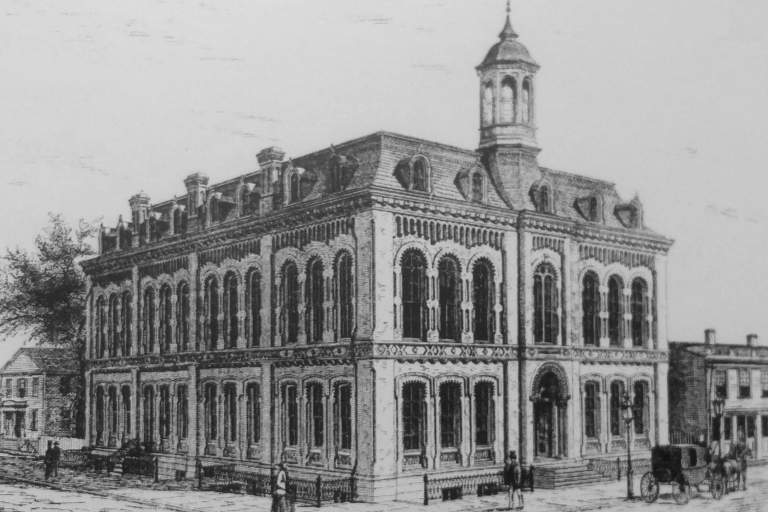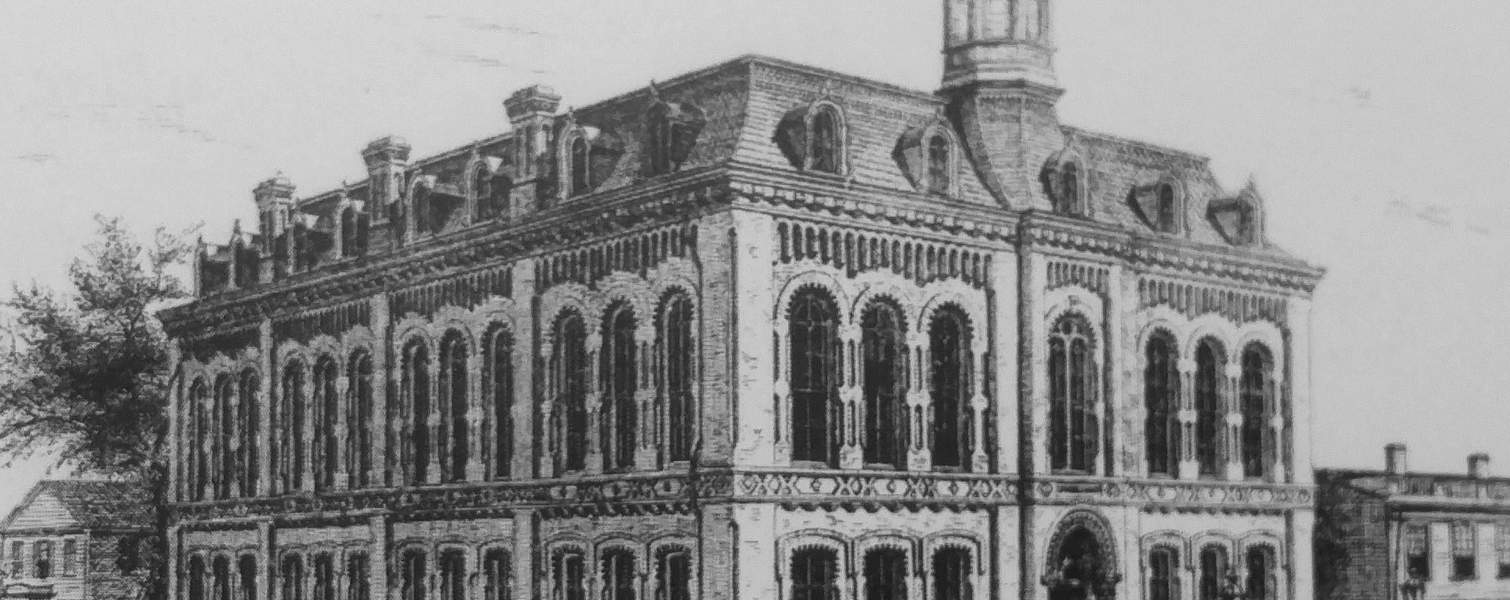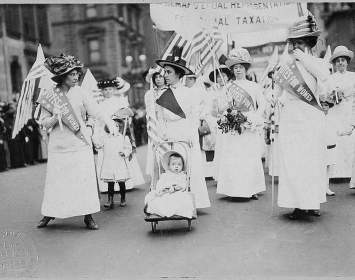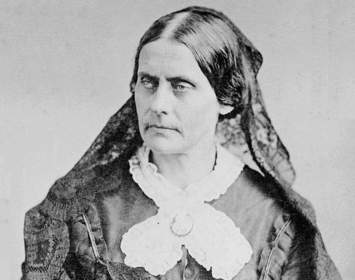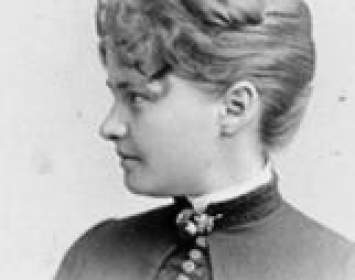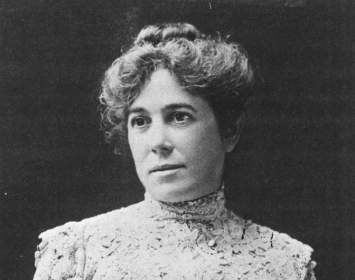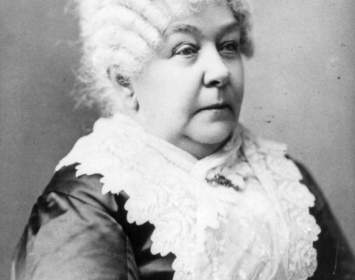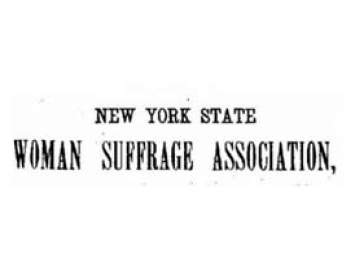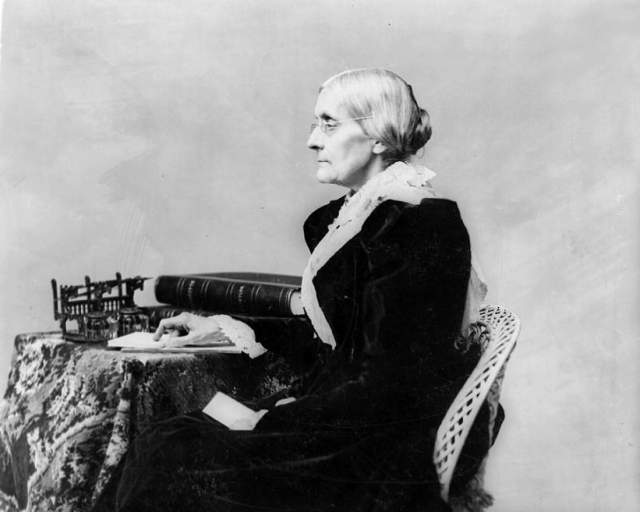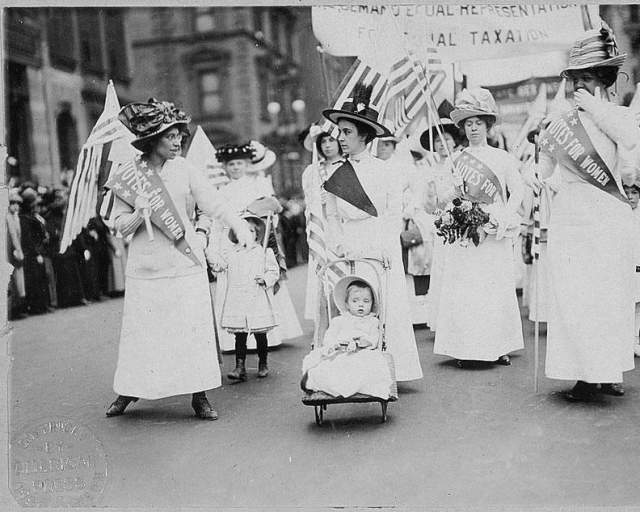Ithaca's Library Hall was the location of three events significant to the history of woman suffrage activism:
- On March 26, 1869, woman's-rights activists Sarah F. Norton and Susan B. Anthony lectured at Library Hall in the presence of Cornell University cofounder Ezra Cornell. Norton called for implementing co-education at the new university. Anthony followed with a more sweeping declaration of the arguments for woman’s rights.
- On March 27, 1894, the first day of a three-day meeting organized by the Tompkins County Political Equality League was held at Library Hall and Dewitt Park Baptist Church (now First Baptist Church), headlined by Anthony and physician, minister, and suffragist Anna Howard Shaw. It was part of an ongoing campaign to seek an amendment to New York's state constitution that would enable women to vote.
- On November 12–15, 1894, the twenty-sixth annual convention of the New York State Woman’s Suffrage Association was held at Ithaca with public meetings at Library Hall and the Lyceum Opera House. Speakers included Anthony, Lillie Devereux Blake, Jean Brooks Greenleaf, and others.
In addition, Lillie Devereux Blake delivered two solo lectures on woman suffrage. (Nineteenth-century practice was to use the singular, woman or woman's when referring to women as a class; later practice was to use the plural, women or women's.) These lectures occurred at events in 1881 and 1885 whose exact dates and sponsorship are unknown.
The March 1869 Event. On March 26, 1869, Susan B. Anthony lectured at Library Hall, accompanied by Sarah F. Norton, president of the Working Women's Association and an advocate of gender-neutral education. Ezra Cornell, cofounder of Cornell University and the donor of Library Hall, was in attendance. It is unclear what organization sponsored this event, but clearly it was a part of a then-ongoing debate over what path the new university would take toward realizing its announced ideal of equal education for men and women. Norton called for a radical, thorough-going implementation of co-education at Cornell. For her part, Anthony followed with a broader summation of the arguments for woman’s rights.
According to a local newspaper, The Cornell Era, Ezra Cornell afterward commented that “all who shall pass the requisite examinations will be allowed to enter the University, without regard to sex,” though owing to the new institution being “taxed to the utmost to accommodate the students now to be admitted and soon to be admitted,” the university could not yet take steps to implement co-education more aggressively.
Cornell University instituted co-education in 1870, though the number of women admitted was tightly restricted until the construction of Sage Hall as a woman’s dormitory in 1872.
The March 1894 Meeting. On Tuesday through Thursday, March 27–29, 1894, the Tompkins County Political Equality League convened a meeting in Ithaca. Public sessions were held at Library Hall and Dewitt Park Baptist Church (now First Baptist Church). The featured speakers were the national-level suffrage advocates Susan B. Anthony and Anna Howard Shaw.
A New York State constitutional convention was in the offing; the purpose of the meeting was to encourage the gathering of signatures on petitions seeking to have the word male removed from the state constitution's description of individual qualifications for voting.
The first day of the three-day meeting (March 27, 1894) was held at Library Hall. Proceedings focused mostly on the appointment of a committee to conduct canvassing in Tompkins County, the county in which Ithaca is located. According to contemporary accounts, a substantial cross-section of Ithaca’s better-educated citizens volunteered to canvass for signatures.
The meeting continued on Wednesday, March 28, at the Baptist Church. Highlights included an endorsement of woman suffrage by Ithaca Mayor Clinton Bouton, whose wife chaired the Tompkins County Political Equality League, and an address by Anthony that lasted almost two hours. Anthony discussed her past work for suffrage and celebrated the many more work opportunities outside the home now available to women, but decried the lack of equal pay for equal work.
On Thursday, March 29, programming returned to Library Hall. Anna Howard Shaw was introduced by Cornell mathematics professor George W. Jones. She delivered an oration that served as the event's finale. Shaw reportedly enthralled her audience with a sweeping catalog of all the ways woman had been treated unfairly through history and in the present day. “The ‘darkest stain upon the country is the disregard for women,’” she declared, and “that ‘there is no monument to women as big as the palm of your hand in this country.’ She concluded, ‘… we need the applied word ‘motherhood’ in our government.”
Encouraged by meetings like this one, New York suffragists collected 600,000 signatures on a petition to make the state's voting requirements sex-blind. The constitutional convention was held that summer. The petition was respectfully considered—an improvement over prior decades, when suffragist campaigning was often mocked and dismissed—but the constitutional convention did not remove the bar to voting by women. On November 6, voters approved the Fourth Constitution of the State of New York, which still demanded that New York voters be male. On January 1, 1895, the new Constitution went into effect.
By mid-September, New York suffragists knew they had failed. Still, through the petition drive the suffrage movement statewide had honed its organizational skills. Even more important, vibrant leaders such as Harriet May Mills of Syracuse, Isabel Howland of Sherwood, and Jean Brooks Greenleaf of Rochester had come forward.
The twenty-sixth annual convention of the NYSWSA was scheduled for Ithaca in mid-November. "The cry after Albany," wrote historians Kammen and Engst, "was ‘On to Ithaca.’"
This event, hosted by the Tompkins County Political Equality League, is apparently not well known to historians. The claim is often made in suffrage histories that it was remarkable for the 1894 NYSWSA convention (see below) to be held in a town as remote as Ithaca despite the lack of any local suffrage organization on the ground! This confusion may be explained by the fact that the Tompkins County Political Equality League had not formally affiliated with the NYSWSA, as many other political equality clubs had. Perhaps this led to the Tompkins County group's existence and its role in sponsoring the March 1894 event to be overlooked.
The November 1894 NYSWSA Convention. The twenty-sixth annual convention of the New York State Woman’s Suffrage Association (NYSWSA) was held at Ithaca on Monday through Friday, November 12–16, 1894. Convention headquarters was the Clinton House hotel. The first public session was held Monday evening at 7:45 p.m. at the Lyceum Opera Hall. Among the speakers were Jacob Gould Schurman, then-Cornell president; Ithaca mayor Clinton D. Bouton; NYSWSA president Jean Brooks Greenleaf; feminist and suffragist minister Annis Ford Eastman; and Carrie E. S. Twing, speaking on behalf of the New York Grange.
The session of Tuesday, November 13, began in Library Hall with Greenleaf presiding. Minutes of the final business meeting of the previous convention were approved. A letter was read from Elizabeth Cady Stanton, who the day before had observed her seventy-ninth birthday. A representative of the Women’s Christian Temperance Union (WCTU) spoke, advocating that temperance and suffrage organizations join forces. A committee was appointed to explore possibilities for such a federation. County reports and an auditor’s report followed. The afternoon session opened at 2:30 p.m. with Greenleaf again wielding the gavel. More county reports were heard, followed by the election of officers. Greenleaf was re-elected president. Harriet May Mills was elected recording secretary, with Isabel Howland elected corresponding secretary. County reports continued.
Tuesday’s evening public session, also at Library Hall, featured national-level suffrage activist Lillie Devereux Blake, who spoke on “The Lesson the Late Constitutional Convention.” It was followed by remarks by suffragist Elizabeth Burrill Curtis and a major address, “An Historical Review,” by Anthony. The standing-room-only crowd was limited only by the Library Hall’s physical capacity.
On Wednesday, November 14, proceedings were held at the Lyceum Opera House. A decision was taken to petition the state legislature to pass a woman suffrage amendment in 1895. Wednesday’s evening session at the Lyceum included addresses by Annie E. P. Searing, Shaw, and Twing.
At the Thursday business meeting (at the Lyceum, starting at 3:00 p.m.) county reports were concluded. Mary Stafford Anthony, retiring as corresponding secretary, was made corresponding secretary emeritus for life. Blake presented the resolutions advanced by the resolutions committee. All but one was adopted.
The Executive Board met at the Clinton House on Friday, November 15 at 9:30 a.m., with thirteen members attending. At the conclusion of that meeting, the twenty-sixth annual convention of the NYSWSA came to a close.
The Building and Site. Library Hall stood at the southeast corner of Tioga and Seneca Streets, across Tioga Street from Ezra Cornell's residence. That site is now occupied by Tioga Place (completed 1924), a commercial building now housing, among other things, a branch of M&T Bank. The structure bears a historical plaque commemorating the Cornell residence's former occupancy of the site. In contrast, the Library Hall site is utterly unmarked.
Ezra Cornell gifted Library Hall to the city of Ithaca as a public library. Chartered by the state legislature in 1864, it opened for book circulation on March 4, 1867. On October 7, 1868, Library Hall hosted the official ceremonies marking the opening of Cornell University. The hall was occasionally used by the University as a site for classes or commencements until construction of its first principal buildings was complete. The Cornell Free Library, as it was called, served the community for many years as a lending library and a venue for lectures and meetings.
Library Hall was demolished in 1960. It is unclear where the library moved until 1969, when Tompkins County took over its operation and built a new library building at 312 North Cayuga Street. By the 1990s, that structure was obsolete. The Tompkins County Public Library converted an old Woolworth's store at 101 East Green Street, which opened in 2000, as the library's new location. That site continues to operate today.
The Library Hall site is now occupied by a small urban park, behind which stands a commercial building housing a branch of the CFCU Community Credit Union. There is no historical marker commemorating Library Hall or any of the events that unfolded there.
The Library Park site and Tioga Place, across the street, bookend the southern entrance to Ithaca Commons, a downtown pedestrian mall.
Thanks to Patricia Longoria, Carol Kammen, and Elaine Engst for research assistance.
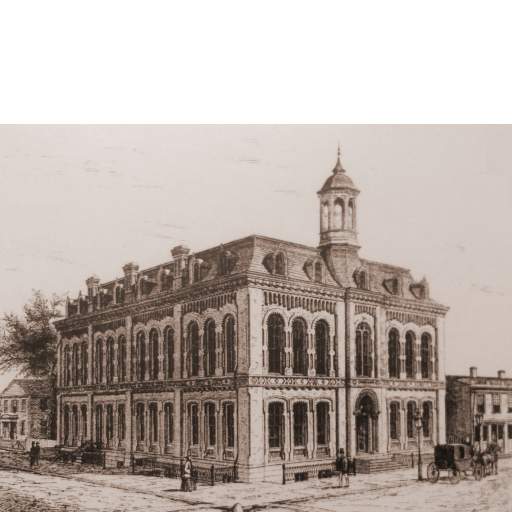
Library Hall, Ithaca
Cornell University cofounder Ezra Cornell gifted this building to the City of Ithaca to serve as a public library. The Cornell Free Library opened for book circulation on March 4, 1867. On October 7, 1868, Library Hall hosted the official ceremonies marking the opening of Cornell University. The structure was razed in 1960.
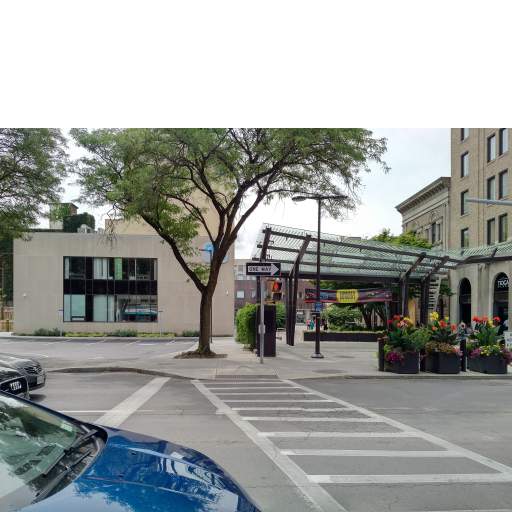
Library Hall Site Today
Library Hall stood where the parking area and credit union building are today. Out of view off the left-hand side of the photo is also a very small public park bordering the parking spaces. The glass-roofed shelter marks the southenmost entrance to the Ithaca Commons pedestrian mall. At far right can be seen the six-story Tioga Place building, which occupies the site where Ezra Cornell's residence once stood.
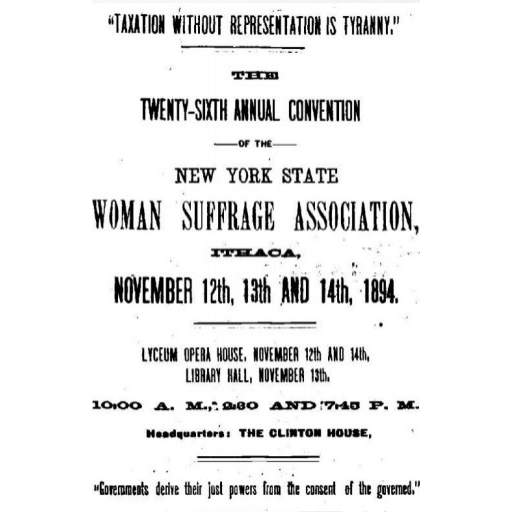
Newspaper Ad for Convention
This notice of the November 1894 NYSWSA Convention appeared in the Ithaca Morning Herald.
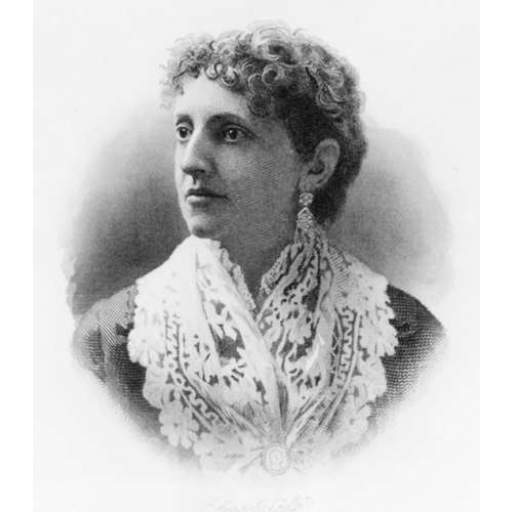
Lillie Devereux Blake
National-level suffrage leader Lillie Devereux Blake made three appearances at Library Hall: a solo lecture in 1881, the November 1894 NYSWSA convention, and another solo lecture in 1885.
Associated Causes
Associated Historical Events
Susan B. Anthony Lectures at Library Hall
March 26, 1869
Local Suffrage Meeting to Amend NYS Constitution
March 27–29, 1894
Twenty-Sixth NY State Suffrage Convention
November 12–16, 1894
